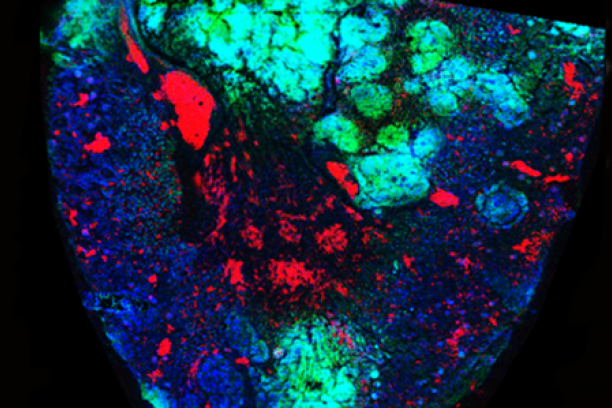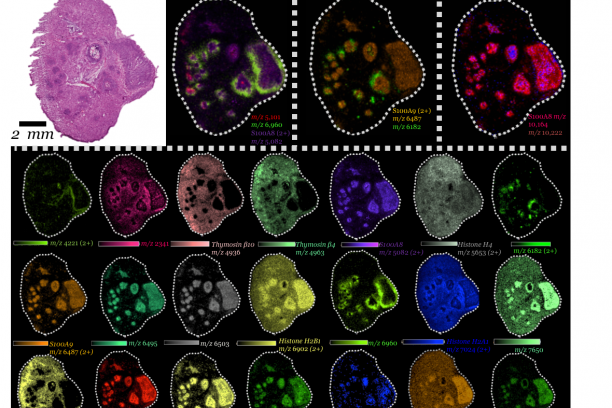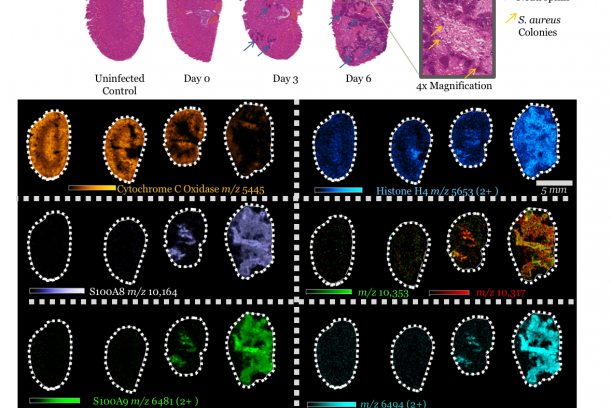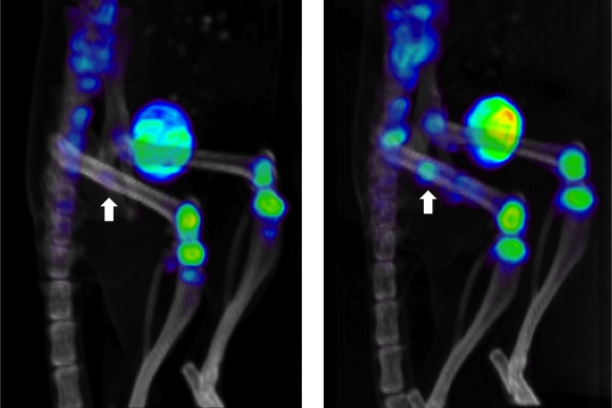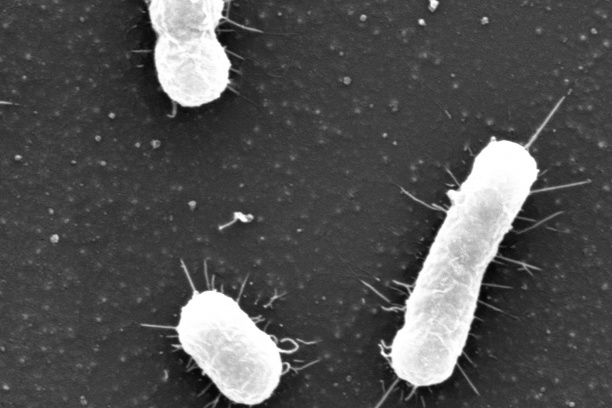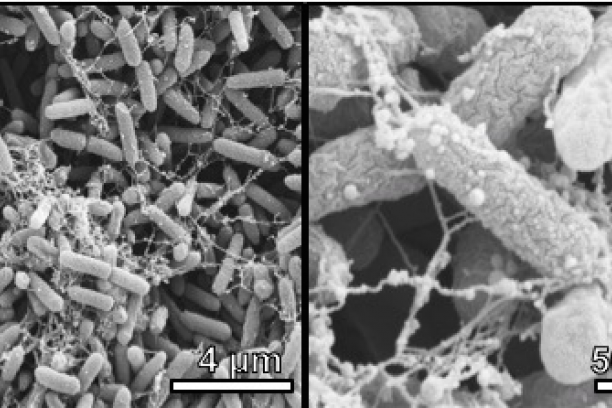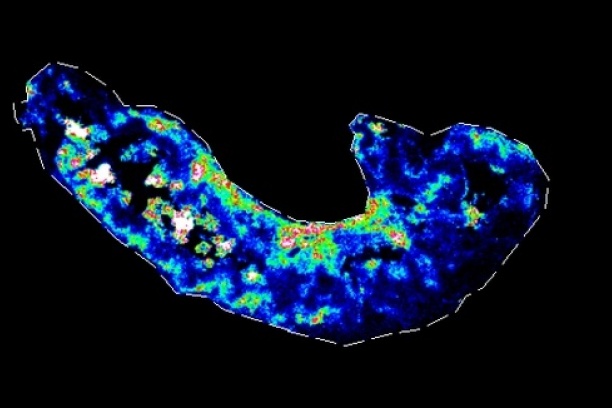1. Bacterial heme-iron acquisition and metabolism. Heme is the most abundant source of nutrient iron in the vertebrate host. Paradoxically, heme is toxic at high concentrations due to the molecule’s significant reactivity. Therefore, organisms that acquire heme as an iron source during infection must have mechanisms of avoiding the toxicity associated with this molecule. Currently, there are numerous projects in the laboratory focused on heme-iron acquisition, metabolism, and detoxification. Our long term goal is to exploit these processes to identify novel targets for antibiotic development.
2. The struggle for nutrient manganese and zinc between host and pathogen. All bacterial pathogens require manganese and zinc in order to infect their hosts. This fact is exploited by host immune proteins that chelate these metals to prevent bacterial growth. Research in our lab studies this struggle for nutrient metal by (i) identifying host and bacterial factors that compete for metal, (ii) determining the impact of infection on metal distribution within vertebrates, and (iii) defining how metal restriction affects bacterial physiology.
3. Imaging the host-pathogen interaction. We are currently developing and employing a variety of imaging technologies to provide unprecedented resolution into the process of infection. These techniques include microscopy, computed tomography, magnetic resonance imaging, and imaging mass spectrometry.
4. Metal acquisition and metabolism in bacterial communities. Little is known regarding how metal is distributed within a microbial community or how different species of bacteria compete for these scarce resources in the environment. Using cutting-edge elemental imaging technologies, we are studying metal distribution and metabolism in bacterial biofilms to better understand these processes.
5. Proteomic Analyses of Iron-responsive, Clp-dependent Changes in Staphylococcus aureus
6. Data Science Knowledge Repository
-
Skaar_Condensed.zip
ss_2604_AF_G1883_051812p_spot_01.zip
ss_2604_spot_02_AF_G1883_051812p.zip
ss_2604_spot_03_AF_G1883_051812p.zip
ss_2604_spot_04_AF_G1883_051812p.zip
ss_2604_spot_05_AF_G1883_051812p.zip
ss_2604_spot_06_AF_G1883_051812p.zip
ss_2604_spot_07_AF_G1883_051812p.zip
ss_2604_spot_08_AF_G1883_051812p.zip
ss_2604_spot_09_AF_G1878_060412p.zip
ss_2604_spot_09_AF_G1883_051812p.zip
ss_2604_spot_10_AF_G1883_051812p.zip
ss_2604_spot_11_AF_G1883_051812p.zip
ss_2604_spot_12_AF_G1883_051812p.zip
ss_2604_spot_13_AF_G1883_051812p.zip
ss_2604_spot_14_AF_G1883_051812p.zip
ss_2604_spot_15_AF_G1883_051812p.zip
ss_2604_spot_16_AF_G1883_051812p.zip
ss_2604_spot_17_AF_G1883_051812p.zip
ss_2604_spot_18_AF_G1883_051812p.zip
ss_2604_spot_19_AF_G1883_051812p.zip
ss_2604_spot_20_AF_G1883_051812p.zip
ss_2604_spot_21_AF_G1883_051812p.zip
ss_2604_spot_22_AF_G1883_051812p.zip
ss_2604_spot_23_AF_G1883_051812p.zip
ss_2604_spot_24_AF_G1883_051812p.zip
ss_2604_spot_25_AF_G1883_051812p.zip
ss_2604_spot_26_AF_G1883_051812p.zip
ss_2604_spot_27_AF_G1883_051812p.zip
ss_2604_spot_28_AF_G1883_051812p.zip
ss_2604_spot_29_AF_G1883_051812p.zip
ss_2604_spot_30_AF_G1883_051812p.zip
ss_2604_spot_31_AF_G1883_051812p.zip
ss_2604_spot_32_AF_G1883_051812p.zip
ss_2604_spot_33_AF_G1883_051812p.zip
ss_2604_spot_34_AF_G1883_051812p.zip
ss_2604_spot_35_AF_G1883_051812p.zip
ss_2604_spot_36_AF_G1883_051812p.zip
ss_2604_spot_37_AF_G1883_051812p.zip
ss_2604_spot_38_AF_G1883_051812p.zip
ss_2604_spot_39_AF_G1883_051812p.zip
ss_2604_spot_40_AF_G1883_051812p.zip
ss_2604_spot_41_AF_G1883_051812p.zip
ss_2604_spot_42_AF_G1883_051812p.zip
ss_2604_spot_43_AF_G1883_051812p.zip
ss_2604_spot_44_AF_G1883_051812p.zip
ss_2604_spot_45_AF_G1883_051812p.zip
ss_2604_spot_46_AF_G1883_051812p.zip
ss_2604_spot_47_AF_G1883_051812p.zip
ss_2604_spot_48_AF_G1883_051812p.zip
ss_2604_spot_49_AF_G1883_051812p.zip
ss_2604_spot_50_AF_G1883_052112p.zip
ss_2604_spot_51_AF_G1883_052112p.zip
ss_2604_spot_52_AF_G1883_052112p.zip
ss_2604_spot_53_AF_G1883_052112p.zip
ss_2604_spot_54_AF_G1878_052212p.zip
ss_2604_spot_54_AF_G1883_052112p.zip
ss_2604_spot_55_AF_G1883_052112p.zip
ss_2604_spot_56_AF_G1883_052112p.zip
ss_2604_spot_57_AF_G1883_052112p.zip
ss_2604_spot_58_AF_G1883_052112p.zip
ss_2604_spot_59_AF_G1883_052112p.zip
ss_2604_spot_60_AF_G1883_052112p.zip
ss_2604_spot_61_AF_G1883_052112p.zip
ss_2604_spot_62_AF_G1883_052112p.zip
ss_2604_spot_63_AF_G1883_052112p.zip
ss_2604_spot_64_AF_G1883_052112p.zip
ss_2604_spot_65_AF_G1883_052112p.zip
ss_2604_spot_66_AF_G1883_052112p.zip
ss_2604_spot_67_AF_G1878_052212p.zip
ss_2604_spot_67_AF_G1883_052112p.zip
ss_2604_spot_68_AF_G1883_052112p.zip
ss_2604_spot_69_AF_G1883_052112p.zip
ss_2604_spot_70_AF_G1883_052112p.zip
ss_2604_spot_71_AF_G1883_052112p.zip
ss_2604_spot_72_AF_G1883_052112p.zip
ss_2604_spot_73_AF_G1883_052112p.zip
ss_2604_spot_74_AF_G1878_052212p.zip
ss_2604_spot_74_AF_G1883_052112p.zip
ss_2604_spot_75_AF_G1883_052112p.zip
ss_2604_spot_76_AF_G1883_052112p.zip
ss_2604_spot_77_AF_G1883_052112p.zip
ss_2604_spot_78_AF_G1883_052112p.zip
ss_2604_spot_79_AF_G1883_052112p.zip
ss_2604_spot_80_AF_G1883_052112p.zip
ss_2604_spot_81_AF_G1883_052112p.zip
